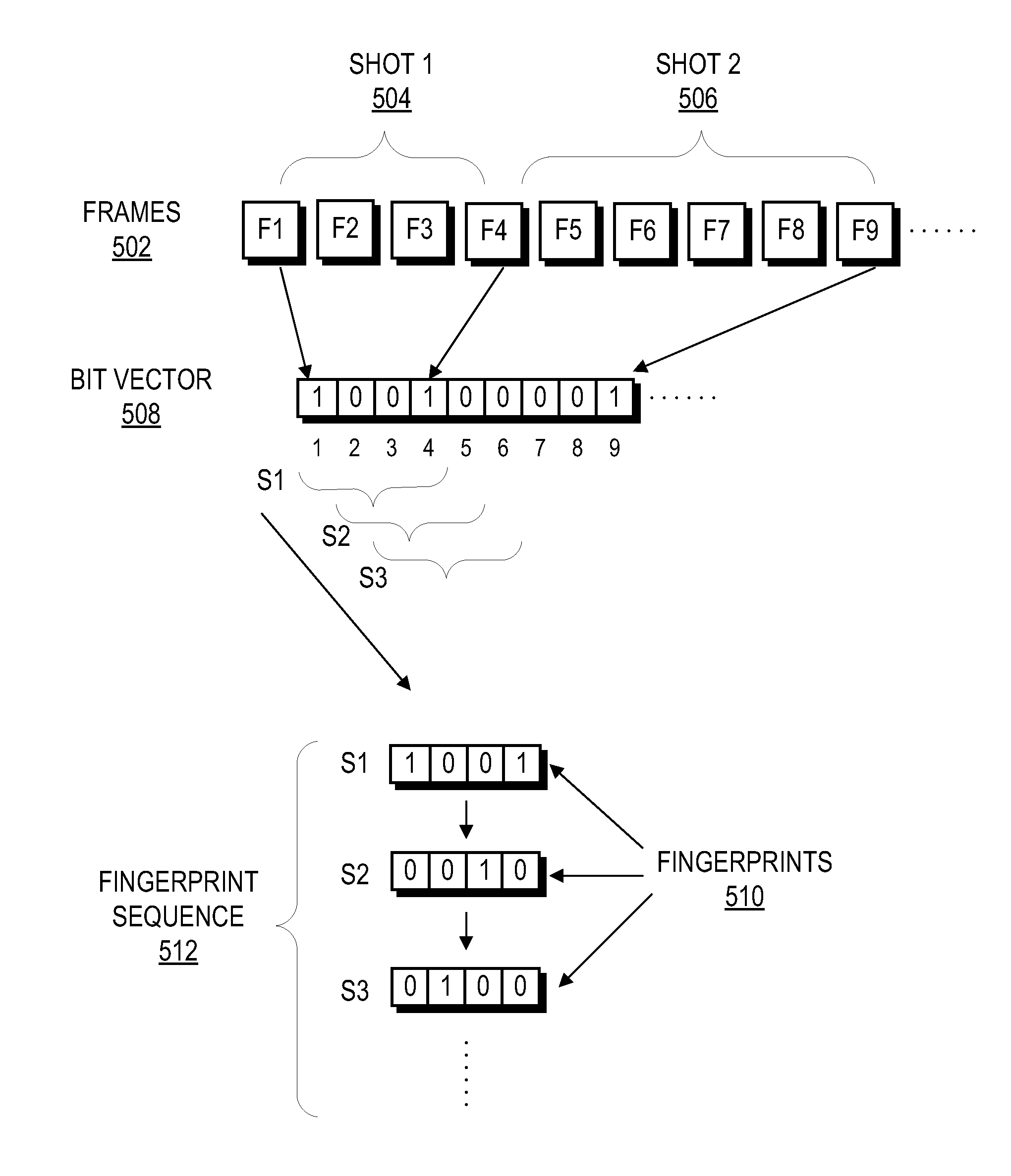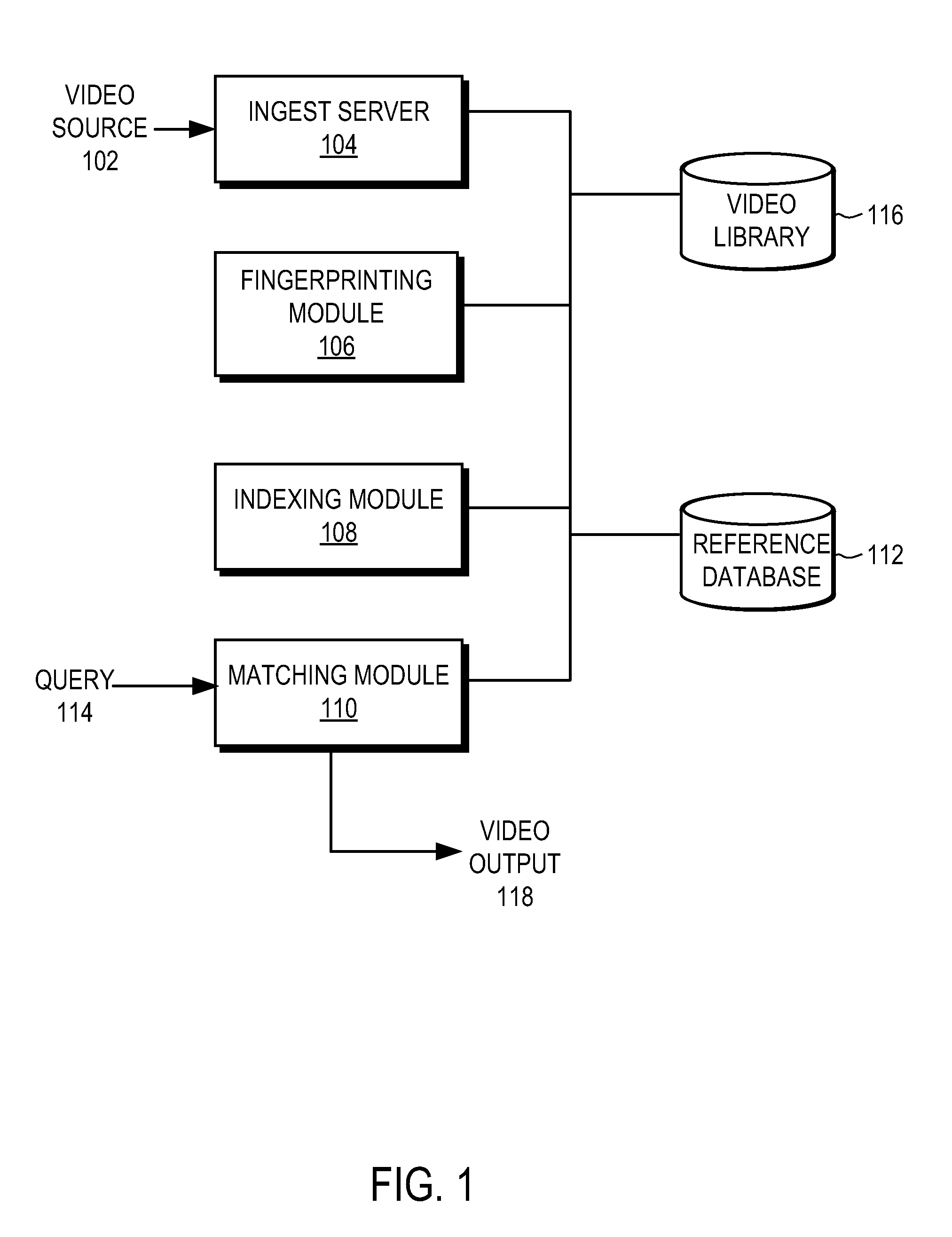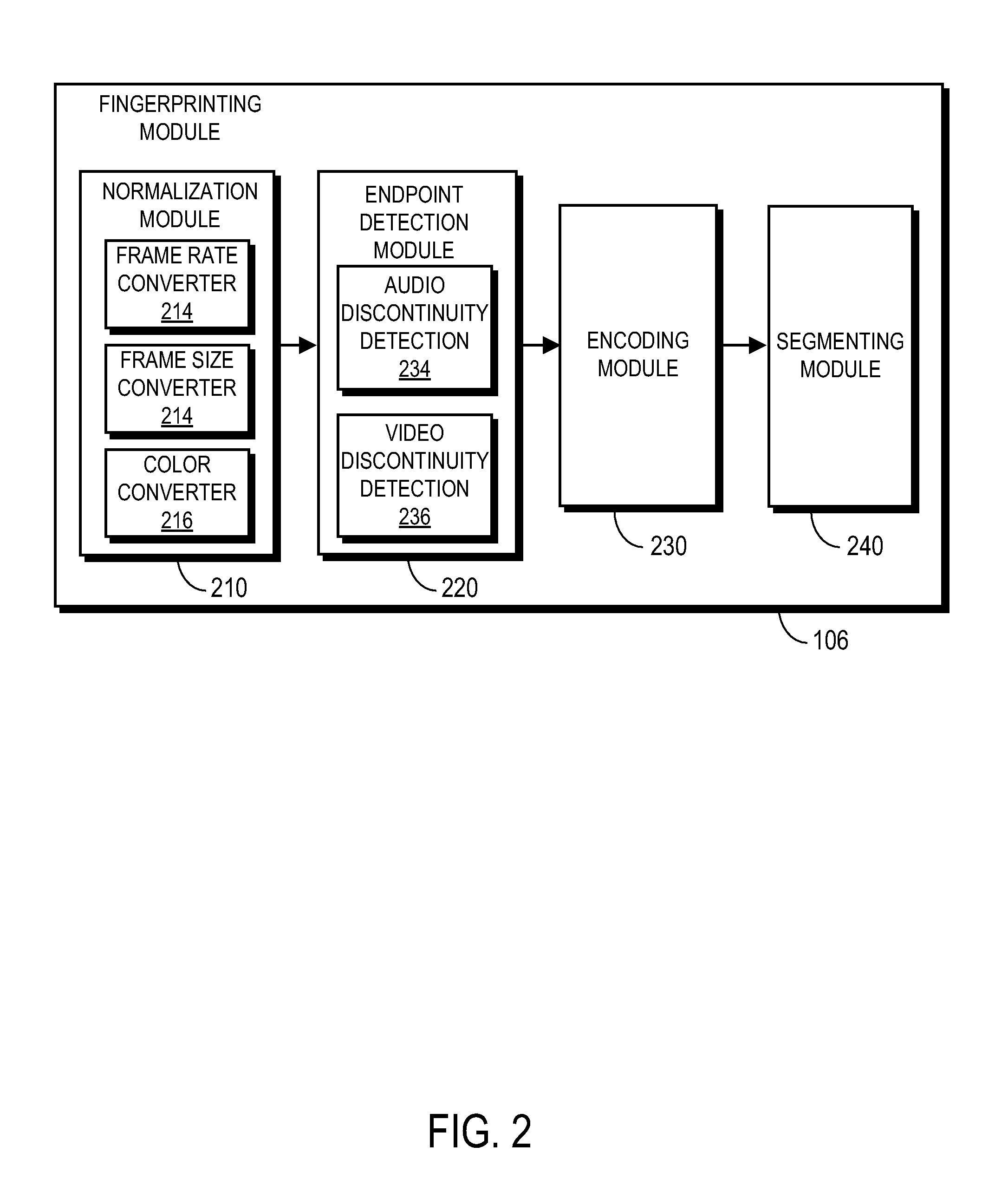Endpoint based video fingerprinting
a video fingerprinting and endpoint technology, applied in the field of video processing, can solve the problems of insufficient identification information, difficult management of these libraries, and difficulty in accurately identifying video content, so as to improve search results, quick and efficient video content identification
- Summary
- Abstract
- Description
- Claims
- Application Information
AI Technical Summary
Benefits of technology
Problems solved by technology
Method used
Image
Examples
first embodiment
[0046]The segmenting module 240 segments the encoded data into a number of fingerprints. Each fingerprint is a subset of the encoded data corresponding to the discontinuity information for a segment of the video. Segmenting can be performed in a variety of ways. In a first embodiment, the segmenting module segments the encoded data representation into fingerprints that overlap by a fixed number of frames. If the offset between fingerprints is, for example, a single frame then a fingerprint is obtained corresponding to each possible starting position of the video. In alternative configurations, a different offset between fingerprints can be used.
second embodiment
[0047]In a second embodiment, the number of frames represented by each fingerprint and the offset between fingerprints is varied rather than constant. For example, in one embodiment, segments are generated so that each segment begins at a particular type of endpoint frame (e.g., a shot boundary).
third embodiment
[0048]In a third embodiment, the segmenting module 240 is combined with the encoding module 230 to quantize and segment the discontinuity data using a “moving window” approach. Here, for example, a first window of frames is quantized in time and a first fingerprint is obtained corresponding to the first window. The window then shifts by, for example, one frame, and the new window of frames (overlapping with the first window) is quantized to obtain a second fingerprint. Other variations of processes for obtaining fingerprints are also possible and will be apparent to those of ordinary skill in the art.
[0049]Referring now to FIG. 4, a flowchart illustrates a process for generating a fingerprint sequence using the fingerprinting module 106. The process in FIG. 4 can be viewed in conjunction with FIG. 5 which graphically illustrates the intermediate results of the fingerprint generation process. For the purpose of illustration, only a limited number of frames are shown in FIG. 5.
[0050]T...
PUM
 Login to View More
Login to View More Abstract
Description
Claims
Application Information
 Login to View More
Login to View More - R&D
- Intellectual Property
- Life Sciences
- Materials
- Tech Scout
- Unparalleled Data Quality
- Higher Quality Content
- 60% Fewer Hallucinations
Browse by: Latest US Patents, China's latest patents, Technical Efficacy Thesaurus, Application Domain, Technology Topic, Popular Technical Reports.
© 2025 PatSnap. All rights reserved.Legal|Privacy policy|Modern Slavery Act Transparency Statement|Sitemap|About US| Contact US: help@patsnap.com



